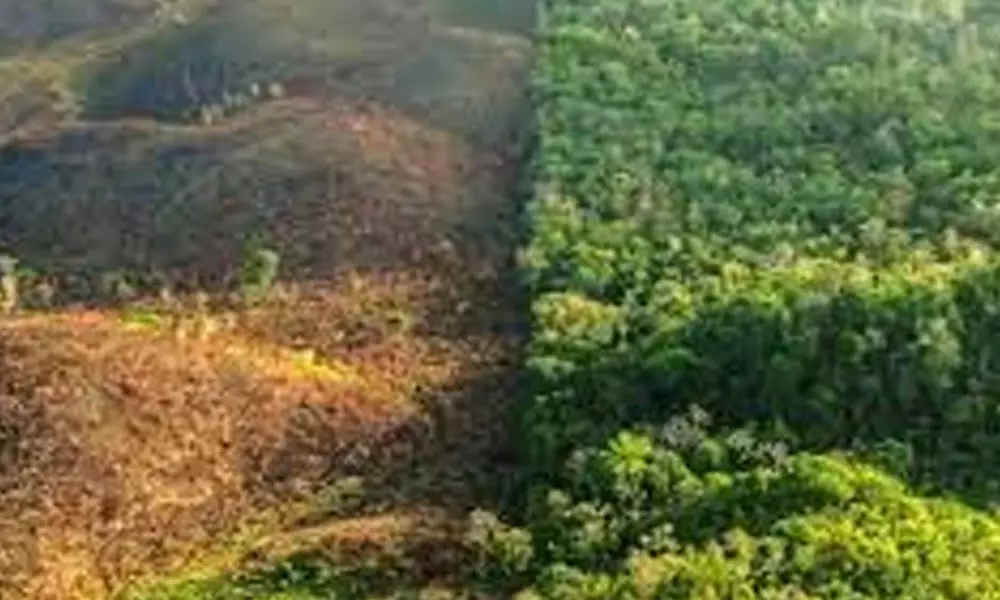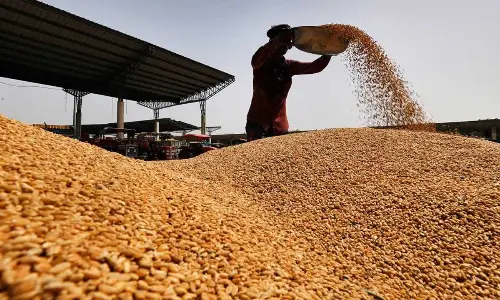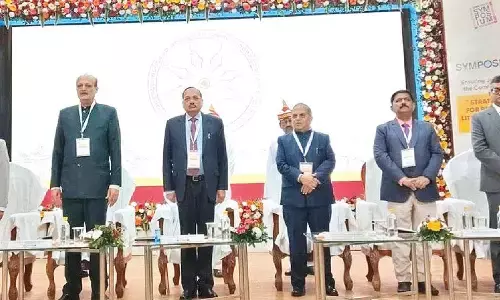Decoding man-driven deforestation saga

Decoding man-driven deforestation saga
Global leaders have pledged to halt and reverse deforestation and land degradation by 2030 with more than $19 billion in public and private funds pledged towards the plan
Global leaders have pledged to halt and reverse deforestation and land degradation by 2030 with more than $19 billion in public and private funds pledged towards the plan. That is some news emanating from Glasgow where the COP26 is being held.
Significantly, this move was backed by Brazil, Indonesia and the Democratic Republic of Congo, which boast of 85 per cent of the world's forests. It is generally believed that the Amazon rainforest deforestation is a major factor for climate change.
Global Forest Watch states that 10 per cent of tree cover has been lost since 2000. Scientists have long agreed that forests are a carbon store. Forests store C02 and act as carbon sinks. A third of the 60,000 known tree species are threatened with extinction.
Let's be a bit more prudent in analysing these stats. The cover of the earth's surface has changed over the past 10,000 years. It means the change was a constant from the end of the last great ice age. Right?
A closer perusal of the UN reports tells us that this planet has 14.9 billion hectares of land out of which 71 per cent is habitable while the other 29 per cent is either covered by ice and glaciers or is barren land. At the end of the ice age, 57 per cent of the habitable land was covered by forest (some 6 billion hectares) but today 2 billion hectares of forests have disappeared.
When the global population was slow at growth some 5,000 years ago only 10 per cent of the forests were lost. What was the population that many years ago? Hardly 50 million! Fast-forward to 1,700 years (ago) and he saw 603 million people around him. Forests were being consumed, yet, half of the habitable land still had cover.
Time and tide kept changing pace and by the turn of the 20th century only half of the forest cover was remaining i.e., between 8,000 BC and 1,900 AD, the other half was lost. So, deforestation is not a new development. Forests were consumed by people faster in the past due to low agricultural productivity and their reliance on wood for fuel.
But, in the last 100 years, man consumed as much forest as his ancestors had done in the last 9,000 years. The reports also suggest that there was as much agricultural land as forest by 1950. By 2018, this increased to 46 per cent while the forests receded to 36 per cent of the habitable land.
There is another misconception in the world today that deforestation is more due to urbanisation. Statistics are loaded against it. The urban land is spread over just 1 per cent of the global land. It simply means that we are eating away our forests more than living in those.
The United Nations projects that the global population will continue to grow to 10.8 billion by 2100. However, this population need not mean the end of forests totally. Agri-farm techniques have increased vastly. The per capita demand for agricultural land is continuing to fall. The amount of land we use for agriculture has increased by only 7 per cent since 1961. And the population has increased by 147 per cent from 3.1 billion to 7.6 billion meanwhile.
The growth of technological innovations such as lab-grown meat and its byproducts will also help in freeing up land used for livestock (the agricultural land mentioned in this piece is a sum of both agricultural land as well pasture for grazing livestock).
There is a hope for humanity amid this gloom. It has been observed that countries tend to follow a predictable development in forest cover. First, forests are lost but eventually a 'forest transition point' is reached where man begins to raise forests again. Reports show that in the first half of the 20th century, temperate forests reached their peak loss at 34 million hectares per decade, and by 1990 they had passed the 'forest transition point.' For the past 30 years, temperate regions have seen a continued increase in forest cover through afforestation. Tropical forests, on aggregate, have also passed peak deforestation in the 1980s but have not passed the transition to reforestation.
COP26 has now addressed the issue to some extent. But how many of the leaders who committed themselves orally to saving the forests know how and when, and how fast forests have been denuded. Forests alone might not give us a hope for the future, but these do certainly give us a fighting chance.
As has been pointed out by experts, if we want to end deforestation we need to understand where and why it's happening; where countries are within their transition; and what can be done to accelerate their progress through it. We need to pass the transition point as soon as possible, while minimising the amount of forest we lose along the way.
We should also note that 14% of deforestation is driven by consumers in the world's richest countries – who import beef, vegetable oils, cocoa, coffee and paper that has been produced on deforested land. Our World in Data has done some remarkable work in this area. Will the world leaders educate themselves before embarking on preventing deforestation?




















